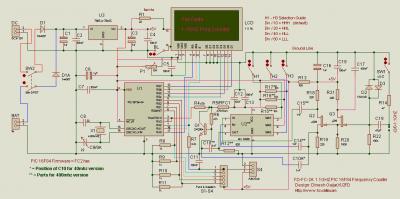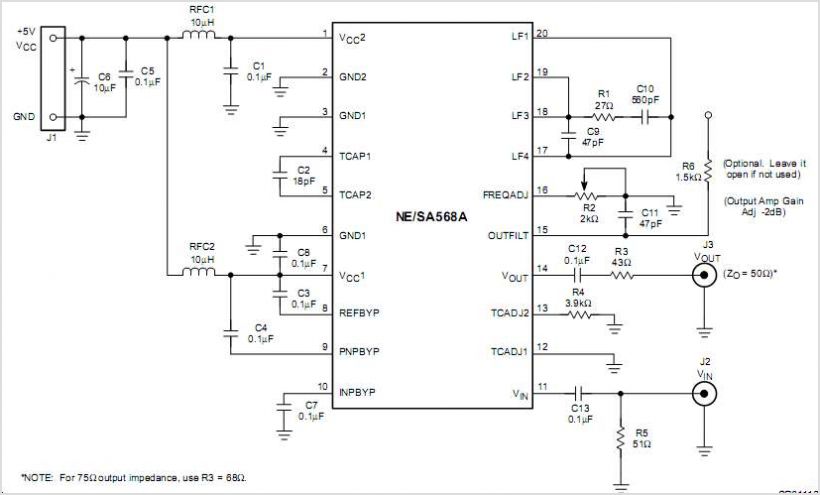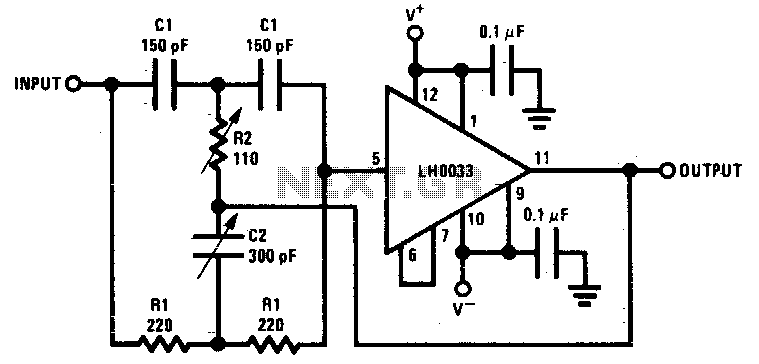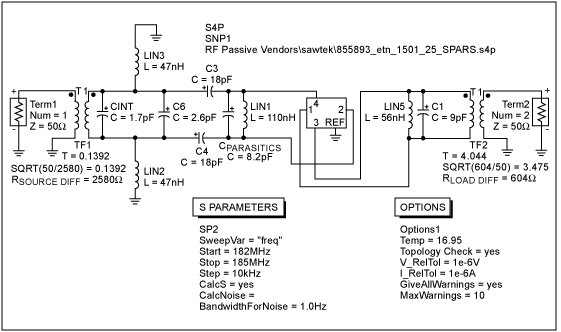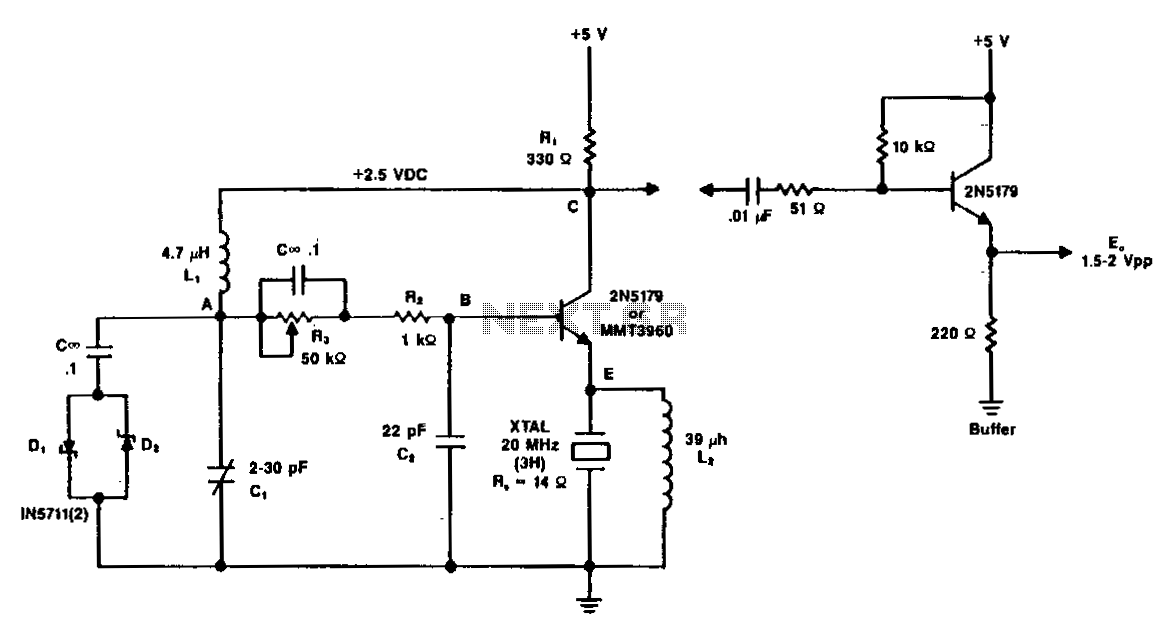
10 Mhz QRSS Beacon
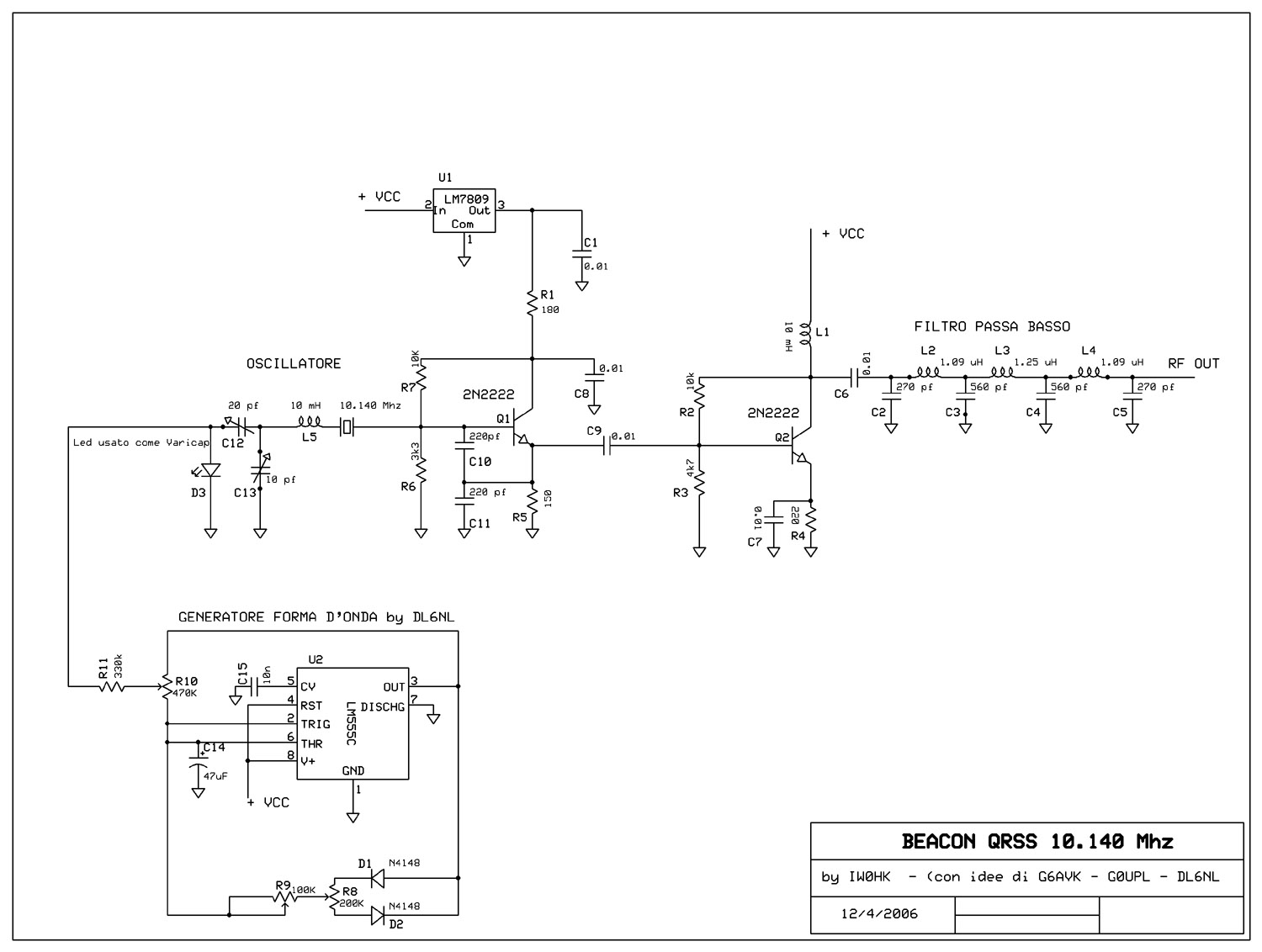
The beacon is currently utilizing a simple Continuous Wave (CW) keying QRSS3 at a frequency of 10140.020 kHz, with a power output of 20 milliwatts. The PIC program used is PicBeacon developed by Ik2pcb. The concept for this beacon originated from two projects: the Hans G0GPL QRSS Junkbox Beacon and a straightforward "2 transistor" project by Colin G6AVK. By integrating ideas from both circuits and drawing inspiration from Alessandro I0SKK's beacon, the construction began using a ground-plane method. A basic 10140 kHz crystal (thanks to Peter DL6NL) was employed to build a Colpitts oscillator, along with a power stage utilizing a 2N2222A transistor. In initial tests, a low-pass filter was not implemented; instead, a Kenwood Antenna Tuner served as a band filter. Additionally, a simple NE555 circuit functions as a pattern generator, resulting in numerous "T" characters in Morse code displayed on the ARGO screen. The operating frequency is 10140.020 kHz.
The described beacon circuit employs a Colpitts oscillator configuration, which is known for its stability and simplicity in generating RF signals. The oscillator is tuned to the QRSS frequency of 10140.020 kHz using a quartz crystal, which ensures precise frequency control. The inclusion of a 2N2222A transistor in the power stage allows for efficient amplification of the RF signal, achieving the desired output power of 20 milliwatts.
For filtering, the absence of a low-pass filter in the initial tests indicates a focus on basic functionality, with the Kenwood Antenna Tuner acting as an alternative to manage unwanted harmonics and provide a cleaner output signal. This approach is practical for early-stage testing, allowing for quick adjustments and monitoring of the signal quality.
The NE555 timer circuit serves as a versatile component in this design, generating a pattern for the CW keying. By modulating the output of the oscillator, it produces Morse code signals that can be visually monitored on the ARGO software, which is commonly used for decoding and analyzing weak signals in the QRSS spectrum.
Overall, this beacon design represents a blend of various inspirations and practical engineering choices, showcasing an effective method for amateur radio experimentation in the QRSS domain. The use of readily available components and simple circuitry makes it accessible for hobbyists while providing a platform for further enhancements and refinements in future iterations.My beacon is using now a simple CW keying QRSS3 10140. 020 khz, power is 20 milliwatt. I`m using a PIC program PicBeacon di Ik2pcb. Click here for the reception report The idea of making this beacon start from two project, one is the Hans G0GPL QRSS Junkbox Beacon and the other is the simple "2 transistor" project from Colin G6AVK. Using this two circuit and also looking idea from Alessandro I0SKK Beacon i start the builing with ugly construction (or ground-plane construction) my beacon. Using a simple 10140 khz xtal (Tnx Peter DL6NL !)i build the Colpitts oscillator and the "power" stage with a 2n2222a transistor.
In the first test the "low pass" filter is not used as you can see in the photo, as a "band filter" i`m using Kenwood Antenna Tuner. A simple circuit with NE555 is used as a patten generator, and in the ARGO screen look like a lot of "T" in morse Code.
The frequency is 10140. 020 Khz. 🔗 External reference
The described beacon circuit employs a Colpitts oscillator configuration, which is known for its stability and simplicity in generating RF signals. The oscillator is tuned to the QRSS frequency of 10140.020 kHz using a quartz crystal, which ensures precise frequency control. The inclusion of a 2N2222A transistor in the power stage allows for efficient amplification of the RF signal, achieving the desired output power of 20 milliwatts.
For filtering, the absence of a low-pass filter in the initial tests indicates a focus on basic functionality, with the Kenwood Antenna Tuner acting as an alternative to manage unwanted harmonics and provide a cleaner output signal. This approach is practical for early-stage testing, allowing for quick adjustments and monitoring of the signal quality.
The NE555 timer circuit serves as a versatile component in this design, generating a pattern for the CW keying. By modulating the output of the oscillator, it produces Morse code signals that can be visually monitored on the ARGO software, which is commonly used for decoding and analyzing weak signals in the QRSS spectrum.
Overall, this beacon design represents a blend of various inspirations and practical engineering choices, showcasing an effective method for amateur radio experimentation in the QRSS domain. The use of readily available components and simple circuitry makes it accessible for hobbyists while providing a platform for further enhancements and refinements in future iterations.My beacon is using now a simple CW keying QRSS3 10140. 020 khz, power is 20 milliwatt. I`m using a PIC program PicBeacon di Ik2pcb. Click here for the reception report The idea of making this beacon start from two project, one is the Hans G0GPL QRSS Junkbox Beacon and the other is the simple "2 transistor" project from Colin G6AVK. Using this two circuit and also looking idea from Alessandro I0SKK Beacon i start the builing with ugly construction (or ground-plane construction) my beacon. Using a simple 10140 khz xtal (Tnx Peter DL6NL !)i build the Colpitts oscillator and the "power" stage with a 2n2222a transistor.
In the first test the "low pass" filter is not used as you can see in the photo, as a "band filter" i`m using Kenwood Antenna Tuner. A simple circuit with NE555 is used as a patten generator, and in the ARGO screen look like a lot of "T" in morse Code.
The frequency is 10140. 020 Khz. 🔗 External reference
